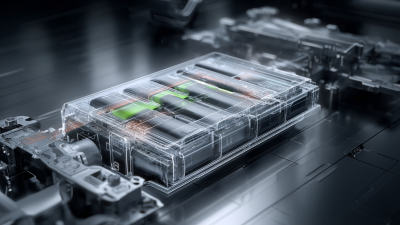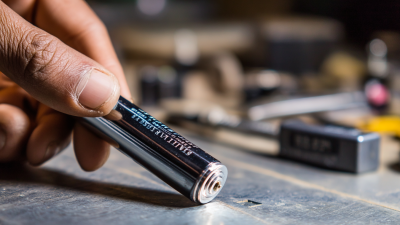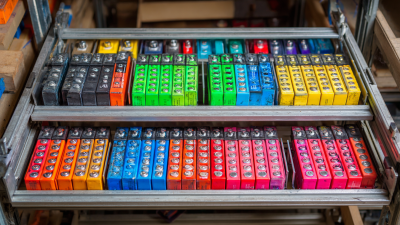Understanding the Factors That Influence UPS Battery Prices: A Comprehensive Guide
In today's technology-driven world, uninterruptible power supplies (UPS) play a crucial role in ensuring that sensitive equipment remains operational during power outages. As the demand for reliable power backup grows, so does the market for UPS batteries, leading to significant fluctuations in ups battery price. Understanding the factors that contribute to these price variations is essential for consumers and businesses alike.

This comprehensive guide explores the myriad influences on UPS battery pricing, including technological advancements, brand reputation, capacity specifications, and market demand. By delving into these elements, readers will gain valuable insights that allow them to make informed purchasing decisions while effectively managing their budget considerations.
Whether you are an individual seeking a reliable power solution for home use or a business aiming to safeguard critical operations, understanding ups battery price dynamics is vital for optimizing your investment.
Factors Affecting UPS Battery Prices You Should Know
When considering the factors that influence UPS battery prices, it's essential to understand the various components that contribute to these costs. The U.S. uninterruptible power supply market is projected to grow significantly, with estimates suggesting a market size reaching several billion dollars by 2032. This growth is largely driven by the increasing demand for reliable power backup solutions across various sectors, including IT and telecommunications. Notably, lithium-ion batteries are at the forefront of this trend, offering improved efficiency and sustainability over traditional lead-acid batteries. As these lithium-ion deployments become more common, prices are expected to reflect the technology's advantages in longevity and performance.
Moreover, UPS battery costs can also fluctuate based on external factors such as extreme weather conditions, which can lead to increased demand for backup power solutions. For example, extreme heat can exacerbate power failures in data centers, making it critical for businesses to calculate their UPS battery backup time accurately. According to recent industry reports, inadequate cooling systems further complicate this, as they can shorten battery life and reduce backup time. This interplay of environmental factors and technology advancements ultimately drives UPS battery pricing, highlighting the importance of understanding these dynamics for informed purchasing decisions.

The Impact of Battery Type on UPS Pricing and Performance
When considering the pricing and performance of Uninterruptible Power Supply (UPS) systems, the type of battery used plays a crucial role. Lead-acid batteries, a traditional choice due to their lower initial costs, are experiencing significant market growth, projected to reach approximately $74.1 billion by 2034. However, they come with limitations such as shorter lifespan and longer recharge times compared to more modern alternatives.
Lithium batteries, particularly Lithium Iron Phosphate (LiFePO4), are gaining traction in the UPS market. These advanced batteries offer higher energy density, longer life spans, and quicker charging capabilities, which enhance overall performance. As seen with the recent launch of new UPS systems using this technology, these options are gradually becoming a preferred choice among consumers who prioritize reliability and efficiency, despite the higher upfront investment.
**Tips:** When selecting a UPS system, consider your specific power needs and how often outages occur. Investing in lithium battery technology might offer cost savings in the long run due to reduced maintenance and replacement costs. Additionally, always evaluate the warranty and support services that come with the battery type, as this can greatly influence your overall satisfaction and performance.
Understanding the Factors That Influence UPS Battery Prices
This chart illustrates the average prices of different UPS battery types, highlighting the significant price differences influenced by the battery type and its performance characteristics.
Understanding Market Trends and Their Influence on Costs
The global renewable energy market is experiencing significant growth, projected to reach a staggering $1.02 trillion in 2024 and further increase to $1.57 trillion by 2032. This trend is shaping many industries, including that of Uninterruptible Power Supply (UPS) batteries. As the demand for sustainable energy solutions rises, understanding market trends becomes essential in navigating the costs associated with UPS batteries.

Factors influencing UPS battery prices include raw material costs, technological advancements, and regulatory policies. The growing emphasis on renewable energy solutions is driving competition and innovation, which can lead to price fluctuations. For instance, if lithium-ion battery technology continues to improve, we might see a decrease in prices due to economies of scale.
Tips:
- Keep an eye on advancements in battery technology, as they can significantly impact pricing strategies.
- Monitor market reports and trends in renewable energy, as shifts in demand can lead to changes in battery costs.
- Consider sourcing batteries from manufacturers that prioritize sustainability, which may offer competitive pricing in light of market dynamics.
Cost Comparisons: New vs. Refurbished UPS Batteries
When considering UPS battery options, the cost comparison between
new
and refurbished batteries plays a critical role in decision-making.
New UPS batteries typically come with a higher price tag, reflecting their guaranteed reliability,
the latest technology, and full warranties. For businesses and consumers who prioritize
optimal performance
and longevity, investing in new batteries can be justified, especially in critical applications
where downtime must be avoided.
On the other hand, refurbished UPS batteries can offer a more
budget-friendly
alternative without sacrificing performance. These batteries are often thoroughly tested and
refurbished to ensure they meet quality standards.
However, potential buyers should be cautious and select reputable vendors to minimize risks
associated with used batteries. While refurbished options can provide significant savings,
it is essential to weigh the trade-offs, including shorter lifespans and potentially
limited warranties. Ultimately, understanding these cost dynamics helps customers
make informed choices that align with their specific needs and financial constraints.
Tips for Finding the Best Deals on UPS Batteries
When it comes to purchasing UPS batteries, finding the best deals can significantly impact your overall investment in power backup solutions. According to a recent market analysis by IBISWorld, the demand for UPS battery systems is projected to grow at a CAGR of 5.2% over the next five years, emphasizing the importance of purchasing strategies. To save money while ensuring reliability, you should consider comparing prices from multiple suppliers. Websites like BatteryStuff.com and Newegg often provide customer reviews and price comparisons that can help you discern the best options available.
One essential tip for securing great deals is to shop during seasonal sales or major promotional events. Many retailers offer discounts during Black Friday, Cyber Monday, or back-to-school sales, which can lead to savings of up to 30%. Additionally, check for manufacturer rebates and warranty offers, as many brands provide incentives for bulk purchases or extended warranties on their batteries. By leveraging these seasonal opportunities and exploring manufacturer options, you can maximize your savings while investing in high-quality UPS batteries.
Understanding the Factors That Influence UPS Battery Prices
| Battery Type | Capacity (Ah) | Price Range (USD) | Average Lifespan (Years) | Warranty Period (Years) | Key Features |
|---|---|---|---|---|---|
| Sealed Lead Acid (SLA) | 7-12 | $50 - $200 | 3-5 | 1-2 | Low maintenance, cost-effective |
| Lithium-ion | 12-40 | $200 - $800 | 5-10 | 3-5 | High efficiency, lightweight |
| Nickel Cadmium (NiCd) | 7-18 | $100 - $300 | 5-10 | 1-3 | Good performance at low temperatures |
| Absorbent Glass Mat (AGM) | 8-20 | $80 - $250 | 4-6 | 1-2 | Vibration resistant, sealed design |
| Gel Cell | 7-10 | $60 - $180 | 3-5 | 1-2 | Leak proof, safe for indoor use |
Related Posts
-

Exploring the Future of Energy: Innovative New Battery Technologies Revolutionizing Power Sources
-

Understanding Battery Power Efficiency Trends and Their Impact on Sustainable Energy Solutions
-

Exploring the Future of Renewable Energy with Innovative Battery Store Solutions
-

Ultimate Guide to Choosing the Best Battery: Key Factors When You Buy a Battery for Optimal Performance
-

How to Maximize the Lifespan of Your Deep Cycle Batteries
-

Battery Power Innovations at the 138th Canton Fair 2025 Enhancing Industry Data Insights
